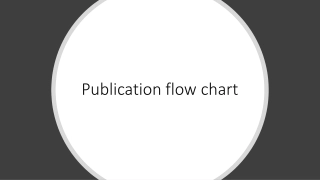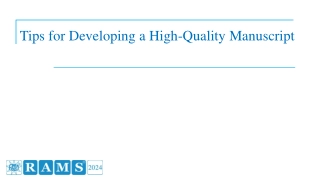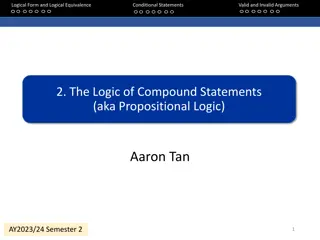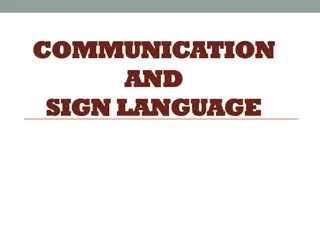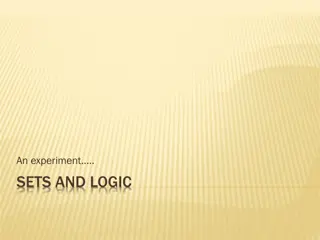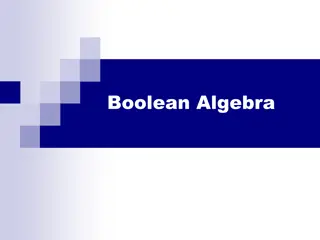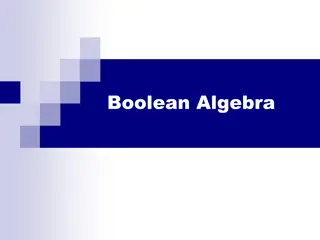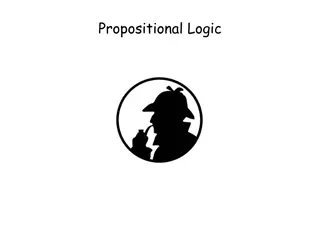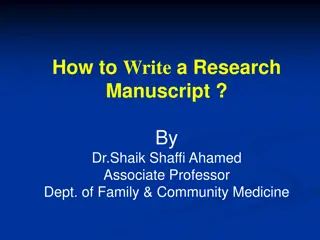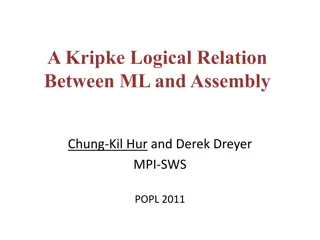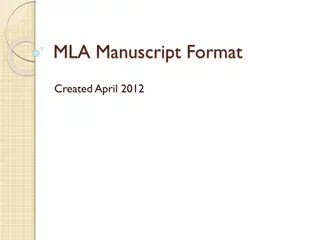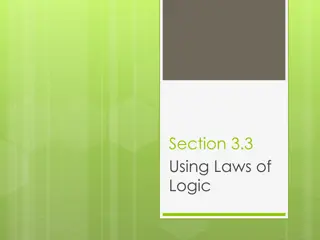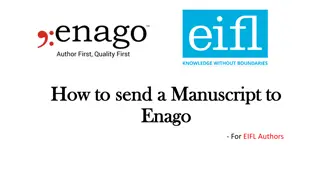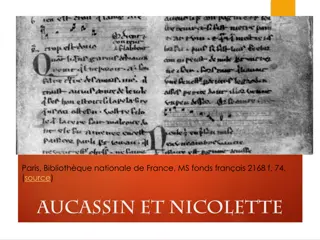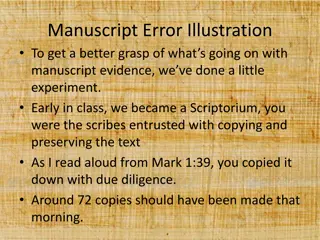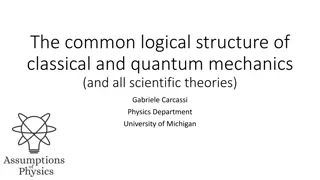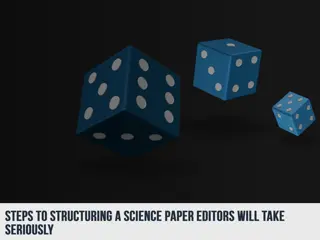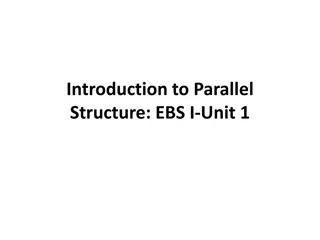Mastering Logical Manuscript Structure for Effective Research Communication
Learn the essential components of a logical manuscript structure for research papers, covering the key questions your readers have, detailed guidance on introduction, methods, and results, and how to effectively present and discuss your findings. Enhance your research communication skills and contribute meaningfully to your field.
Download Presentation

Please find below an Image/Link to download the presentation.
The content on the website is provided AS IS for your information and personal use only. It may not be sold, licensed, or shared on other websites without obtaining consent from the author.If you encounter any issues during the download, it is possible that the publisher has removed the file from their server.
You are allowed to download the files provided on this website for personal or commercial use, subject to the condition that they are used lawfully. All files are the property of their respective owners.
The content on the website is provided AS IS for your information and personal use only. It may not be sold, licensed, or shared on other websites without obtaining consent from the author.
E N D
Presentation Transcript
1 Logical Manuscript Structure Name of the university / Date of workshop
Your readers have 4 key questions Methods Results What did you do? What did you find? Introduction Discussion Why did you do the study? How does the study advance the field?
Introduction Why does your study need to be done Introduce the topic Worldwide/regional relevance Broad/specialized audience What is known about topic Up-to-date studies Cite broadly worldwide What is not known Clear description of problem Use keywords like however Aims Specific aims
Methods What did you do? Reproduce your findings Researchers in your field Build on your research Evaluate your study design Peer reviewers Validate your results
Methods What do they need to know? Who/what was used in the study Samples or participants Materials (where purchased) How you conducted the study Methodology and techniques Discuss specific conditions and controls How you analyzed your data Quantification methods/software Statistical tests (consult a statistician)
Guide your readers through your findings 1. Initial observation 2. Characterization 3. Application Logical presentation Example: 1. Fabricate new membrane for water treatment 2. Evaluate physical and chemical properties (e.g., under different temperatures/pressures) 3. Efficacy in removing particulate contamination
Guide your readers through your findings One figure at a time Results Clear subheading 1 Introduce experiment (figure 1) Discuss trends & relationships Summarize key finding Figure 1. Descriptive figure caption Clear subheading 2 Introduce experiment (figure 2) Discuss trends & relationships Summarize key finding Figure 2. Descriptive figure caption
Discussion How your study contributes to the field Summarize what you did Begin with research problem Briefly describe study design Summarize key findings Interpret your findings Similarities & differences Unexpected/negative results Limitations Why important to the field Main conclusion Implications Implications
Logically linking your ideas Answer the four key questions for your reader Introduce topic Currently published studies Why this study needs to be done Problem in the field Objectives What you did Methodology Results and figures What you found Summary of findings How your study will advance the field Interpretation of findings Implications for the field Logically link your ideas throughout your manuscript
Titles Get your readers attention Should include Should avoid Questions Describing methodology Abbreviations What s important Keywords for indexing Conciseness (<20 words) Your title should be a concise summary of what s most important State what was investigated, what was measured, and the sample the measurements were taken from
Abstracts First impression of your paper Aims Importance of your topic Results Significance of your study Conclusions Relevance of your study Clarity of your writing
Abstracts Good first impression What do you readers want to know? Why did the study need to be done? Introduce topic and problem What did you do? Your aims and methodology What did you find? How study will advance the field? Key results Conclusions and implications


